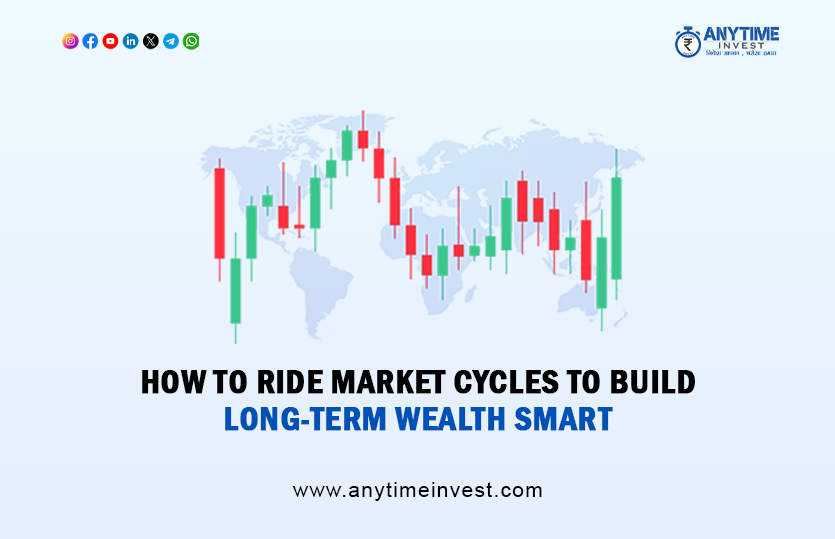How to Ride Market Cycles to Build Long-Term Wealth Smart
Mastering the Ups and Downs of the Market to Secure Your Financial Future

Building wealth isn't about catching every wave perfectly—it's about riding the cycles smartly without falling off your board. Learning how to ride market cycles to build long-term wealth smart is like mastering the art of surfing: you need patience, skill, and a solid understanding of the tides. Let's dive in!
Introduction to Market Cycles
What are Market Cycles?
Market cycles are the natural rise and fall of financial markets over time. Think of it like the seasons: there's always a pattern, even if each year feels a little different. Markets don’t move in a straight line; they go up, peak, decline, and bottom out before repeating the dance again.
Why Understanding Market Cycles is Crucial for Investors?
If you want to know how to ride market cycles to build long-term wealth smart, understanding these rhythms is step one. Recognizing where you are in the cycle helps you make smarter investment choices and avoid common traps.
Phases of a Market Cycle
Accumulation Phase
This is when smart money—think professional investors and insiders—starts buying assets quietly after a downturn. Prices are low, and fear still lingers.
Mark-Up Phase
Confidence returns, the economy improves, and prices climb. The media finally starts covering positive news again, luring in more investors.
Distribution Phase
Here’s where things get tricky. Assets are overvalued, and smart money starts selling to latecomers who fear missing out.
Mark-Down Phase
Reality hits. Prices fall fast, panic sets in, and the market corrects itself. This is when amateur investors often sell at a loss.
How to Identify Market Cycles Early
Technical Indicators
Charts and patterns can reveal a lot. Watch for things like moving averages and trendlines to get a hint about the market’s mood.
Fundamental Analysis
Looking at a company's earnings, revenues, and market conditions helps you spot overvalued or undervalued opportunities.
Sentiment Analysis
Investor emotions drive markets. High greed often signals a top, while extreme fear might signal a bottom.
Strategies to Ride Market Cycles Smartly
Buy Low, Sell High (Sounds Easy, Right?)
It’s easy to say, tough to do. Buying during the accumulation phase and selling during distribution is key if you really want to master how to ride market cycles to build long-term wealth smart.
Diversify Your Portfolio
Don’t put all your eggs in one basket. Different asset classes behave differently across cycles. Diversification smooths out the wild rides.
Long-Term Mindset Over Short-Term Panic
While short-term volatility can be frightening, long-term investing makes those hiccups insignificant. Stay focused on your end game.
Common Mistakes While Riding Market Cycles
Emotional Decision Making
Fear and greed are terrible advisors. Don't let headlines dictate your actions; instead, follow your plan.
Using Market Timing Rather than Market Time
Trying to predict exact tops and bottoms usually backfires. Consistency beats precision when it comes to wealth-building.
Real-World Examples of Wealth Building Through Market Cycles
Just look at legends like Warren Buffett. He’s the king of understanding how to ride market cycles to build long-term wealth smart by staying patient and buying undervalued assets during downturns.
Tools and Resources to Track Market Cycles
Use apps like Yahoo Finance, MarketWatch, and economic indicators like GDP reports and unemployment rates to stay informed. Knowledge is your surfboard!
Conclusion
Learning how to ride market cycles to build long-term wealth smart isn’t about perfection—it’s about strategy, patience, and consistency. Recognize the stages, keep an eye out for warning signals, maintain your diversity, and maintain composure. Over time, you’ll find yourself riding the waves toward real financial freedom.
FAQs
What is the best time to invest during a market cycle?
The best time is typically during the accumulation phase when prices are low, and fear is high. However, even consistent long-term investing can reduce risk.
How long does a full market cycle usually last?
It varies but often spans 4 to 10 years depending on economic conditions, interest rates, and global events.
Can beginners ride market cycles effectively?
Absolutely! With a solid understanding of basics, emotional control, and a long-term view, beginners can thrive.
Is diversification really that important?
Yes! Diversification reduces risk and helps ensure you’re not wiped out if one sector crashes.
How can I avoid emotional investing during market cycles?
Have a plan, stick to it, automate investments, and tune out the media noise. Trust your strategy, not your emotions.












